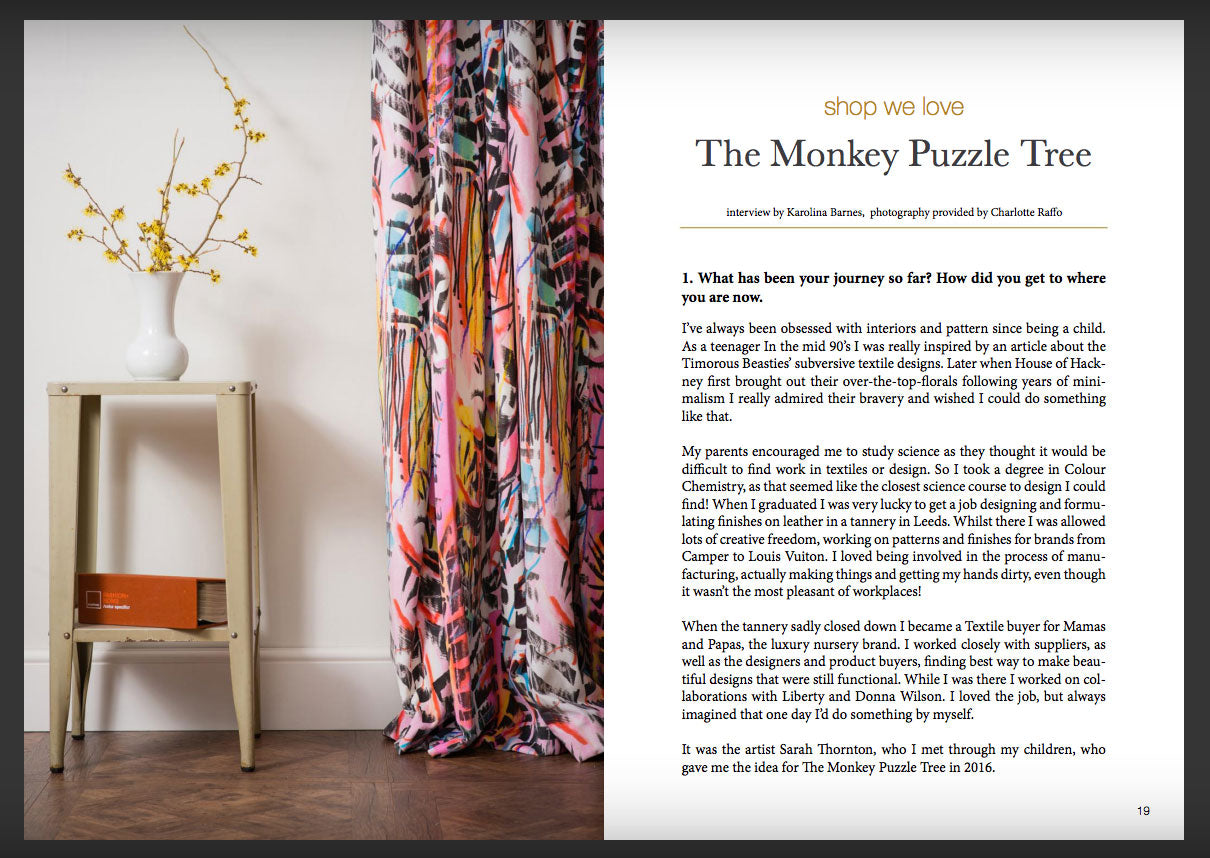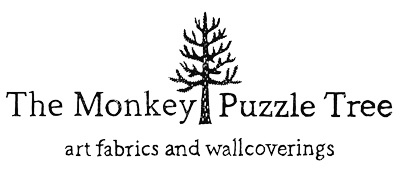Knowledgeable friendly support ★ DDP Tracked International shipping ★ Trade accounts available ★ Free UK delivery for samples and orders over £250
Knowledgeable friendly support ★ DDP Tracked International shipping ★ Trade accounts available ★ Free UK delivery for samples and orders over £250
Shop
Estila Magazine Issue 33/34 Interview with Charlotte Raffo from The Monkey Puzzle Tree
August 07, 2018 2 min read

...Our inspiration always comes from the art rather than researching current trends. A traditional design house might set a brief, and the designer would work towards that. The way we work is by visiting the artists, looking at their work and finding something that really sparks our imagination, then finding a way to turn it into a beautiful product.
By working this way I hope that our designs are not only unique and different from anything on the market, but also because they can’t be pinpointed to a specific time they won’t date. We believe in investing in something well made that you love, and having that for many years rather than changing with every trend...
It’s also important to us that the original piece of artwork isn’t designed digitally - not to say we’re luddites, we do use technology where necessary. But I think that replicating that original craft as closely as possible gives the final designs an authenticity you can’t recreate digitally.
This can be seen if you look carefully at the leopards in Alexis Snell’s 'How the Leopard got his Spots' velvet - there are 18 slightly different leopards, as we’re chosen to keep the irregularity in her original lino printing technique.
For ‘Rita does Jazz’ by Sarah Thornton, the original was a very small watercolour painting, loosely sketched out onto a piece of hotel notepaper. We enlarged the painting multiple times and worked together to create the repeat to scale using a colour photocopier, scissors, sellotape and a ruler. By the time we’d finished we really felt like we had a strong connection to the pattern and the process...
Contact Us
We would love to hear from you - get in touch here.
Bring some colour to your inbox
Inspiration, new designs and behind the scenes with our artists every fortnight.
We won't pass your details onto anyone else.
